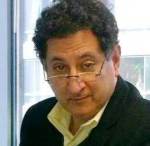Updated
Business Brief: Diversifying Mix Tops Morocco’s Energy Strategy – Wants US Investors – Jean R. AbiNader
Jean R. AbiNader
April 23, 2018
On April 19, the US State Department hosted the second US-Morocco Strategic Energy Working Group meeting bringing together Deputy Assistant Secretary of State for Energy Diplomacy Sandra Oudkirk and Director General Amina Benkhadra, of Morocco’s National Bureau of Petroleum and Mines. Benkhadra has previously served as Minister of Energy in Morocco, has participated in numerous international conferences on energy issues, and is credited with being a major force behind Morocco’s progressive energy policies
Accompanying her was a team from the Moroccan Agency for Sustainable Energy (MASEN), the Moroccan Agency for Energy Efficiency (AMEE), the Research Institute for Renewable Energy and New Energies (IRESEN), and the Embassy of Morocco in Washington DC. Among the issues discussed were an update on the sector’s development “including hydrocarbons exploration, renewables deployment, and energy efficiency; on-going Department of State and Commerce initiatives in Morocco; areas for collaboration including natural gas, energy efficiency, and renewables; and private sector investment opportunities in the energy field,” according to a State Department press release.
These meetings coincided with a report released by Oxford Business Group (OBG) on Morocco’s efforts to diversify the energy sector and attract international investors. Key elements in its strategy are the launch of the long-anticipated $4.6 billion liquefied natural gas (LNG)-to-power plant later this year, its ongoing renewable solar and wind energy projects, and long-term ambitious plans to join Nigeria in developing an offshore gas pipeline linking the western part of Africa to Europe.
As Morocco’s economy continues to diversity, its consumer and industrial energy demands are increasing and Morocco needs international partners to fund its efforts.
The LNG-to-power plant is scheduled for completion in 2025 and includes two new combined-cycle gas turbine power plants, an LNG terminal and onshore regasification unit at Jorf Lasfar on the Atlantic coast, and pipelines connecting the terminal to the Maghreb-Europe pipeline.
According to OBG, “Developing LNG infrastructure is integral to efforts to broaden the energy mix and meet rising domestic demand for electricity. While the country is already a key player in renewable energy, aiming to increase renewables’ share of capacity from 32% to 52% by 2030, diversifying the fossil fuel component of the kingdom’s energy portfolio away from a reliance on oil and coal is also central to government planning. At present, around 94% of primary energy needs are met by imports, mainly of oil and coal, but also some direct electricity transfers.”
Hopes are high that the move toward LNG will account for at least 13% of total capacity by 2025, rising from the 2015 level of 5.8% of energy in the country. American companies have already met with the Ministry and Morocco has sent a delegation to tour various facilities in the US so interest is high in all elements of the Jorf Lasfar project. OBG writes, “The kingdom’s renewed focus on LNG represents an opportunity for global suppliers, and several upstream producers have expressed interest in supplying gas to the planned LNG-to-power plant.” Qatar, the US, and Russia are among potential sources of feedstock to the plant, while the country continues its exploration efforts to find commercially viable gas.
As previously noted in Business Briefs, Sound Energy reported deposits in its Tendrara concession in eastern Morocco that could be commercially produced as early as 2019; while SDX Energy discovered two additional gas fields in the north. These positive results will attract additional investors to the gas exploration sector, which will help Morocco reduce its reliance on imported hydrocarbons that drives its trade deficit.
Another closely watched potential source of feedstock is the proposed Morocco-Nigeria pipeline for which both countries have invested millions of dollars in feasibility studies. Gas would be transported along the coast, making it available to a dozen countries along the way, powering new opportunities for economic development and growth.
It is startling that Morocco, which, at the beginning of this century was so dependent on imported energy for 94% of its needs, may, by 2030, be an export hub for the EU and Africa.
